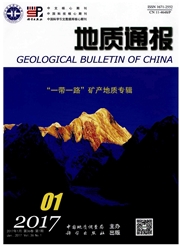

 中文摘要:
中文摘要:
布卡拉曼加拉贝氏牙形石动物群首次在西藏阿里日土县多玛区脱塔拉剖面的吞龙共巴组底部发现,主要由Rabeignathus bucaramangus,Sweetognathus whitei,Sweetognathus ironatus和Mesogondolella cf.bissilli组成,指示的地层时代为Artinskian中晚--Kungurian早期。此前,该动物群仅发现于美国犹他州、堪萨斯州、哥伦比亚的布卡拉曼加、帕米尔东南部和中国滇西保山地区。该牙形石动物群的产出地点位于班公湖以北、龙木错以南的喀喇昆仑地层分区,跨越了班公湖-怒江断裂带北界,而这一动物群被认为是冈瓦纳北缘浅海区特有的浅水相类型,因此推测班公湖-怒江缝合带可能不是冈瓦纳大陆的北界。
 英文摘要:
英文摘要:
The conodont Rabeignathus bucaranumgus fauna is for first time found at the base of the Tulonggongba Formation at the Tuotala section in the Doima district, R.utog County, Ngari, Tibet. It is mainly composed of Rabeignathus bucaramangus, Sweetognathus whitei, Sweetognathus ironatus and Mesogondolella cf. bissilli, indicating a mid-late Artinskian-early Kungurian age. Before, this fauna was only discovered in Utah and Kansas of the United States, Bucaramanga of Colombia, the southeastern part of Pamir and the Baoshan area of western Yunnan, China. This conodont fauna occurs in the Karakorum stratigraphic area north of Bangong Co and south of Lungmu Co across the northern boundary of the Bangong Co-Nu- jiang fault belt and is considered to be a shallow-water facies type characteristic of the neritic region on the northern margin of Gondwana. Therefore, it is inferred that the Bangong Co-Nujiang suture zone is likely not to be the northern boundary of Gondwana.
 同期刊论文项目
同期刊论文项目
 同项目期刊论文
同项目期刊论文
 期刊信息
期刊信息
